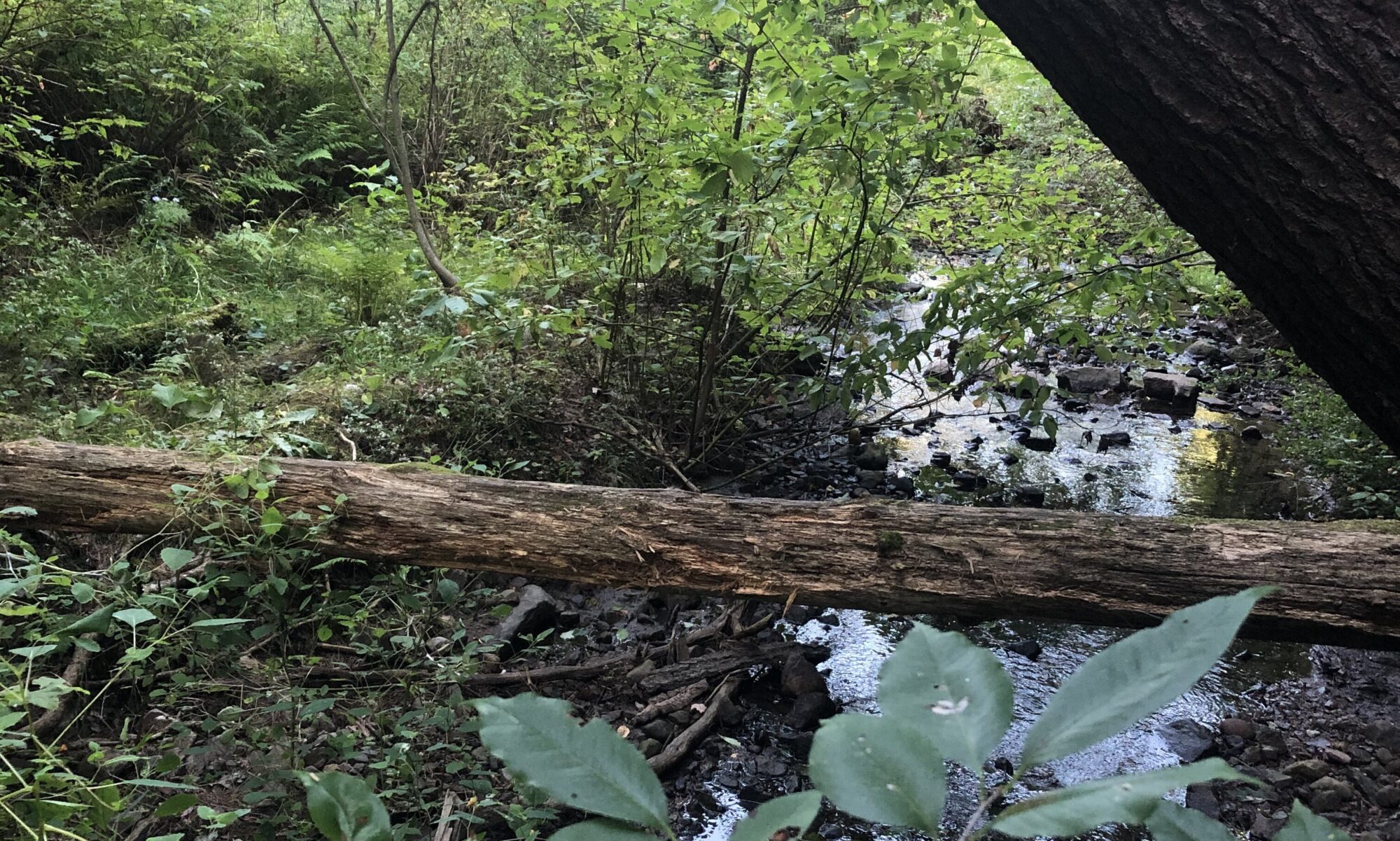As we walked down to our site we heard a large group of raven overhead flying towards campus. An occasional one would swoop down into the barren trees for a moment, but wouldn’t linger too long. We searched the site but found minimum traces of wildlife activity aside from this. There was, however, remnants of some sort of haired animal. Although we weren’t certain the exact type of species we were looking at we thought that it could possibly be a squirrel.
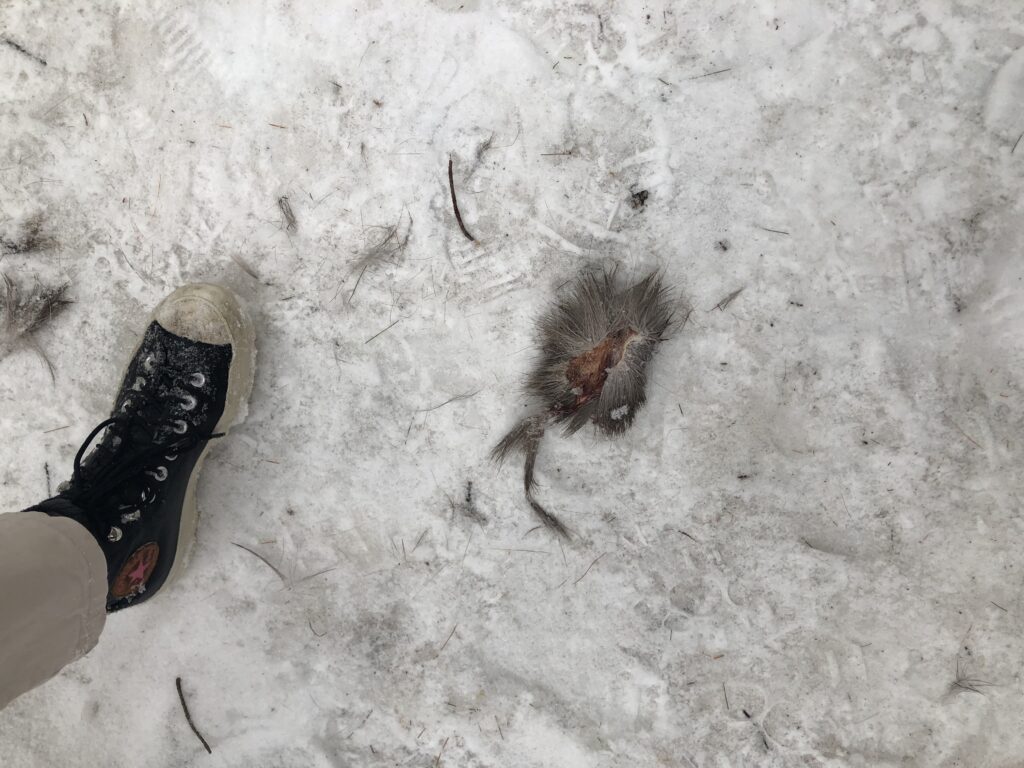
Animal fur was found near our site
Squirrels aren’t nearly as active in the winter as in warmer months and tend to stay in nests or dens when the temperature falls under 30 degrees Fahrenheit, but this week we had several days where the temperature was well above 30 (Dunn, 2017). This makes the conjecture of the animal being a squirrel more reasonable. As mentioned, squirrels live in nests or dens depending on if they’re ground or tree squirrels. Squirrels typically spend the day out and about looking for food and return to their nests at the end of the day to sleep through the night. In winter, however, they don’t spend nearly as much time out of their homes since they create food reserves and thus rarely have to leave for food (Miller, 2017). Most people assume that squirrels rely solely on acorns as food; however, they eat an array of nuts in addition to seeds, fruits, fungi, grains, vegetables, roots, bulbs, and bark (Love the Garden, 2020). Squirrels have both ground and air predators: hawks, owls, foxes, coyotes, wildcats, weasels, snakes, fishers, and pine martins to name a few (Dunn, 2017).
In terms of species interaction, we were unable to figure out what animal had attacked the squirrel. We searched the surrounding area for animal tracks but since the area was heavily trafficked by humans we weren’t able to find anything. Given the area though we guessed that it was a land animal like a fox. I thought maybe this way of skinning the animal was characteristic of a certain predator but I couldn’t find any evidence to that. We talked about reasons as to why they might’ve been out of their nest in the first place and thought that maybe it was taking advantage of the warmer weather this week to add to their food reserve- since there are still some berries on a couple bushes.
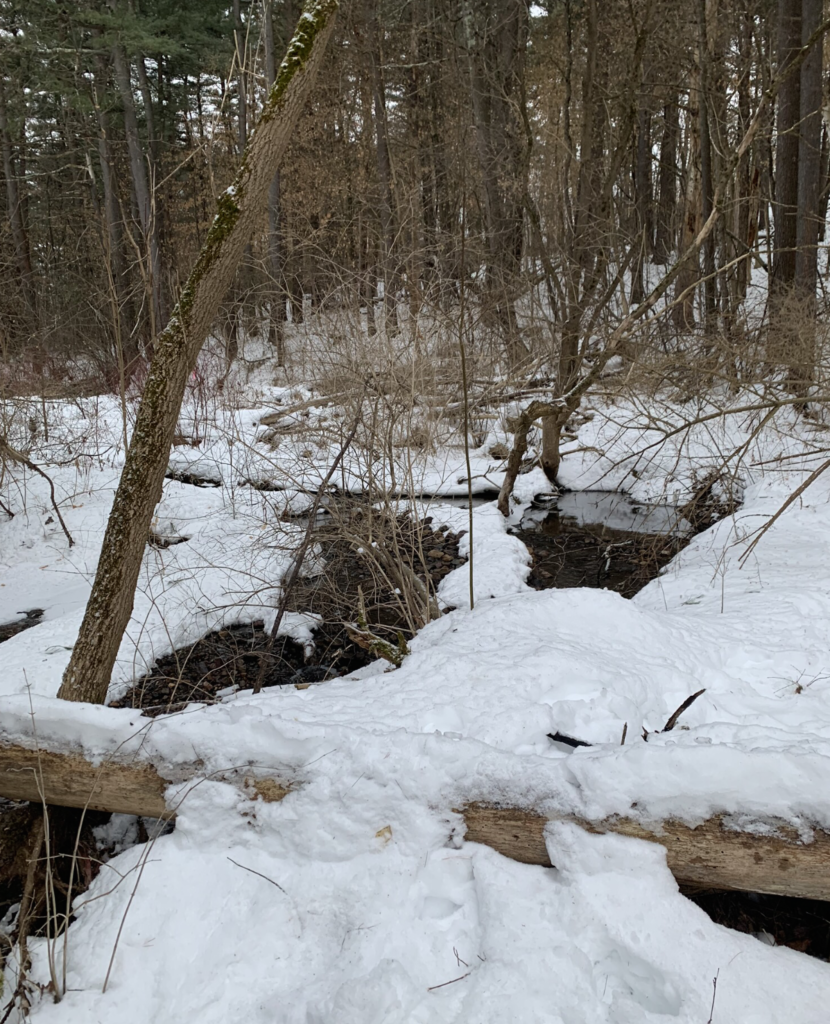
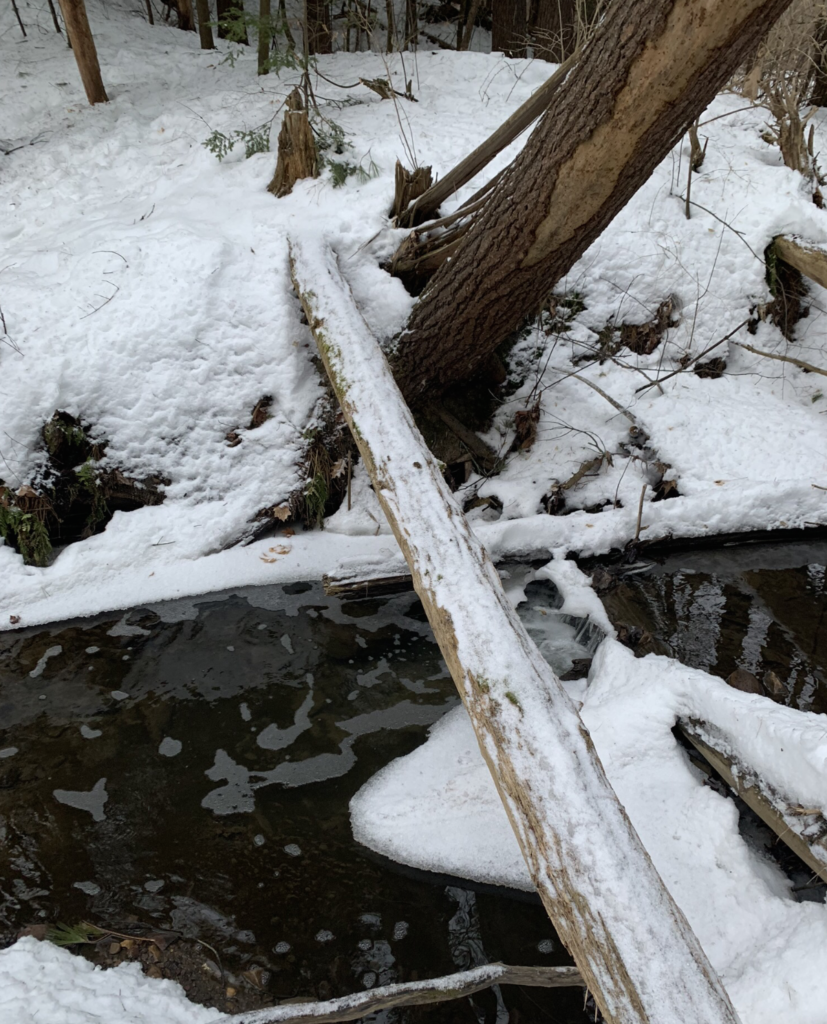
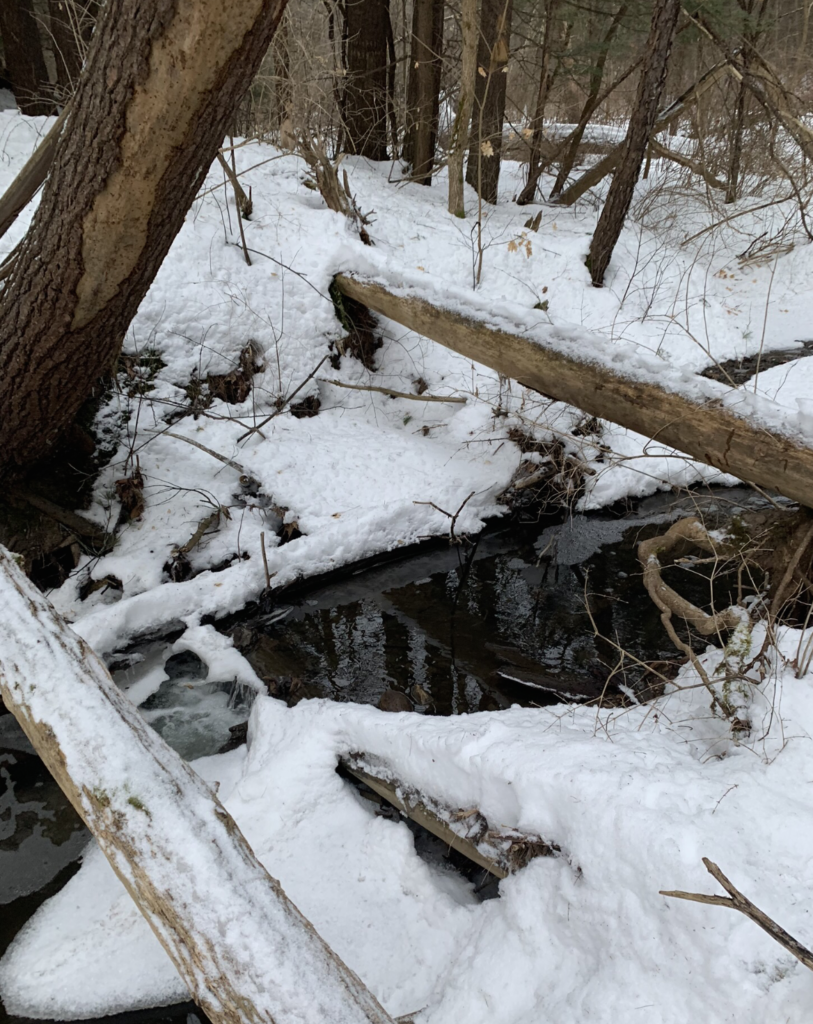
This was an area where holes were covered by snow and it was difficult to secure footing but where some animals may have been burrowing
Phenologically the site looks the same in terms of vegetation: some moss on the fallen tree and a couple small ferns peeking out along the banks under the snow. This is the first time we’ve really seen a large amount of snow on the site which was interesting. Navigating around the river was more challenging since holes between braches were hidden by the snow; many of our steps ended up with us knee-deep. For animals that are smaller though, the snow provides more surface area for them to travel as well as insulation for burrows. With it being on the warmer side this week most ice that was present on our last visit had melted and the stream velocity was much greater. The width of the stream seems to be narrower but that may just be because of the snow in encroaching in on it. There weren’t any tracks in our area on this visit which may have been from the melt.
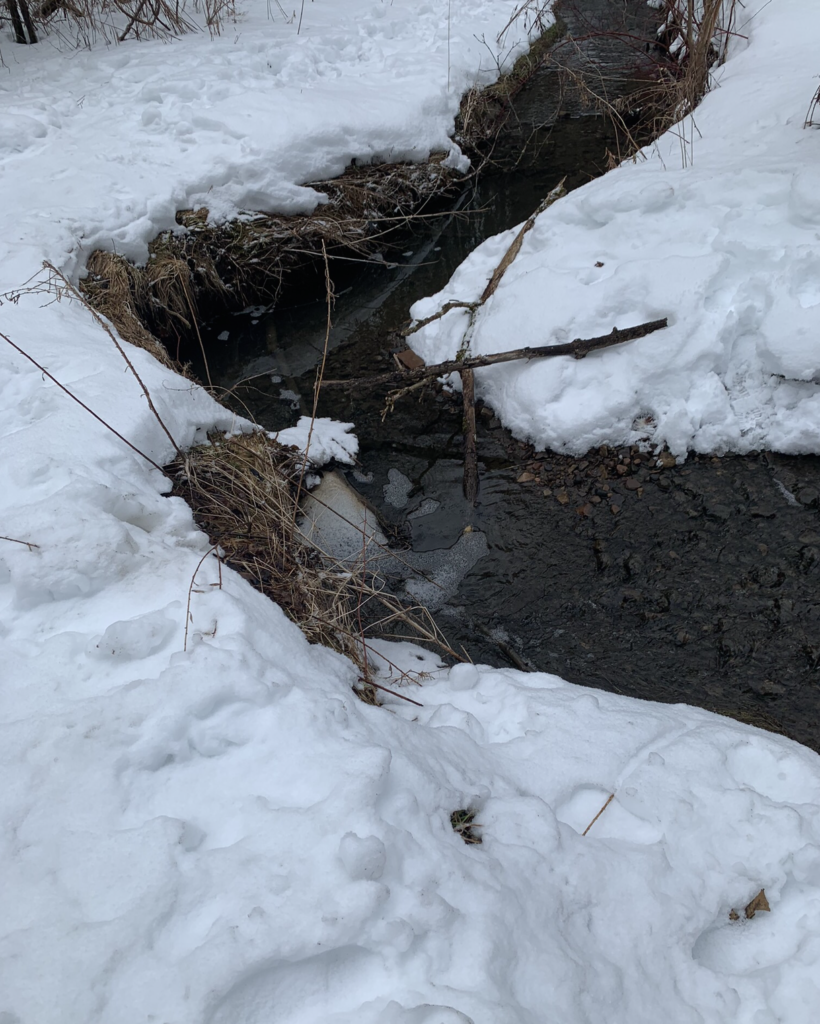
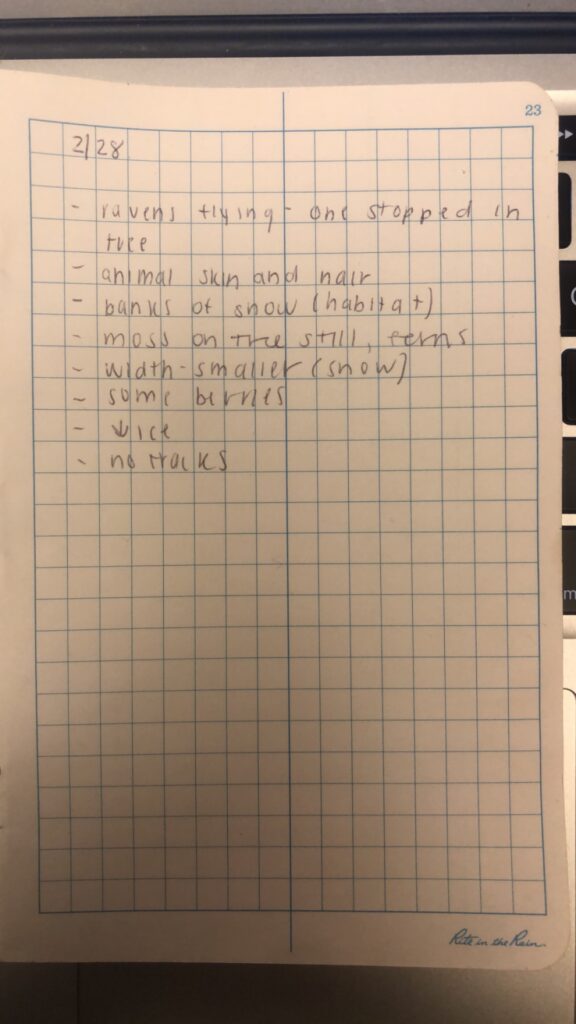
References
Dunn, Elton. “What Do Squirrels Do in the Cold?” Animals.mom.com, 11 Aug. 2017, animals.mom.me/squirrels-cold-4390.html.
Miller, Pamela. “Squirrel Sleeping Habits.” Animals.mom.com, 11 Aug. 2017, animals.mom.me/squirrel-sleeping-habits-5119.html.
Love The Garden. “What Do Squirrels Eat?” Love The Garden, 2020, www.lovethegarden.com/uk-en/article/what-do-squirrels-eat.
